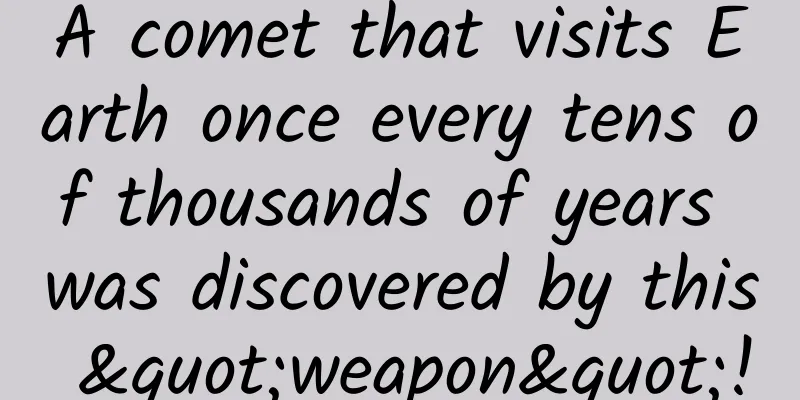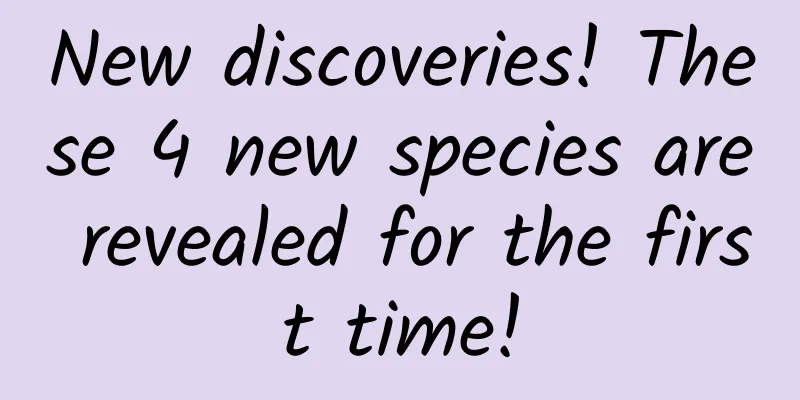A comet that visits Earth once every tens of thousands of years was discovered by this "weapon"!

|
The recent annual great comet C/2022E3 (ZTF) has appeared quite frequently. In fact, when it is at its brightest, it is just barely visible to the naked eye. The reason why it has attracted so much attention may be that there has not been a comet with good observation conditions in the northern hemisphere for many years. Comet C/2022E3(ZTF) Photo by Ren Dayong from Shandong University (Weihai) At a distance of 500 billion to 1 trillion kilometers from the sun, the temperature is already very low, and there are many large and small "dirty snowballs", which are comets in their original state. They orbit the Sun in very long periods, and most of them never come into the inner solar system. About 70 years ago, Dutch astronomer Oort proposed the existence of a primitive comet "gathering zone" at the edge of the solar system. This mysterious area was also named the Oort Cloud. Comet C/2022E3 (ZTF) is likely one of the countless "dirty snowballs" in the Oort Cloud. The icy Oort Cloud is not always calm. The movement of dirty snowballs and other small celestial bodies around it, and even the influence of stellar gravity, can cause some disturbances. Decades ago, Comet C/2022E3 (ZTF) deviated from its original orbit due to this disturbance and now has come to the central region of the solar system. From the name of the comet, we can get some clues about its origin. Take this comet, for example. "C" stands for it being a non-periodic comet After leaving this time, even if I am lucky enough to come back next time Probably millions of years later. "2022" is the year it was discovered The letter after the year indicates the month of discovery. 26 English letters except "I" and "Z" The remaining 24 letters each represent a "half moon" "E" stands for early March The last number indicates This comet is the third to be discovered this month **In the naming rules of comets, the last part is usually the name of the discoverer. **For example, the famous 1P/Halley's Comet, and the 153P/Iketani-Zhang Comet discovered with the participation of Chinese astronomy enthusiast Zhang Daqing. In recent years, many comets have been named after telescopes , such as the frequently-used Pan-STARRS telescope. The ZTF that discovered this comet is also a "magic tool" for large-field sky surveys. The telescope that discovered Comet E3 Image source: ZTF official website The full name of ZTF is Zwicky Transient Facility, which can be translated as "Zwicky Transient Source Detection Facility". The telescope is located at the Palomar Observatory in Southern California, and is now operated by the California Institute of Technology (Caltech). The device is named in honor of Swiss-American astrophysicist and Caltech professor Zwicky. This is a telescope built in the 1940s. You read that right, it is indeed an antique. In 2017, 16 spliced 6K×6K CCDs gave this telescope a new lease of life. The ZTF telescope is a 1.2-meter Schmidt catadioptric telescope with a focal ratio of only f/2.5, which can obtain a large observation field of view. Although it has been used for many years, the image quality is still excellent. The large CCD detector gives it a large field of view of 47 square degrees, which can accommodate about 188 moons. Of course, ZTF is not used to observe the moon. The excellent observation conditions at the site enable it to observe celestial bodies around magnitude 20 with a single exposure of 30 seconds. The reason why ZTF can carry out high-speed sky surveys is inseparable from its fast and accurate data processing system at the back end. Simply put, it can identify faint celestial bodies with small light changes and movements within a short period of time after observation, and automatically issue reports. On March 2, 2022, a comet was photographed by ZTF at a distance of 640 million kilometers from the sun and only 17th magnitude. It is Comet C/2022E3 (ZTF). As more and more large-field survey telescopes are put into use, many comets can be observed when they are very dark, which makes it increasingly difficult for astronomy enthusiasts to discover comets using traditional methods. While observing small celestial bodies in the solar system, ZTF can also discover important astronomical observation targets such as supernovae, variable stars, and rapidly changing active galaxies. It is not only a "small but precise" astronomical research tool, but also a representative work of "new uses for old telescopes." END Author: Li Xin, Research Librarian of Beijing Planetarium Editor: Guru |
Recommend
Misconception! 5 common misunderstandings about information flow advertising image materials, with 4 guidelines + 2 cases attached!
Introduction: This article lists five major color...
What is the relationship between the "different world" of karst caves and groundwater?
recently In Nalangtun, Bamu Township, Tian'e ...
If you choose the wrong tap, you will drink poisonous water every day. How to choose? Remember these points
Reviewer of this article: Li Xueyang, Postdoctora...
From storm surges to seawater intrusion: What challenges does global warming bring to coastal cities?
Tuchong Creative On October 21, seawater backflow...
WeChat’s new killer feature—“Nearby Businesses”
When the WeChat Nearby People app first appeared,...
How to build your first machine learning model on your iPhone
introduction As a data scientist, I have always h...
Advanced model tree course, solving most learning problems
Advanced model tree course, solving most learning...
Pico G2 4K VR all-in-one: standard 4K screen, your own ultra-realistic virtual world
In the past, we all had the experience of putting...
Kuaishou advertising display format, Kuaishou advertising delivery optimization
In this article, I will talk about Kuaishou adver...
There are fruits shaped like black pearls falling on the road. Don’t touch them, get out of the way!
Be careful when going out recently. Some fruits s...
Tesla electric car, BMW M5 collide: the result is exaggerated
Video of a car accident involving an M5 high-perfo...
Analysis of Kuaishou’s user growth model!
Kuaishou has released its third-quarter 2021 fina...
The Science of New Year’s Goods | “Pre-prepared meals” enter the New Year’s Eve dinner, are their safety, taste and nutrition guaranteed?
|||| Written by reporter Song Meng Edited by Liu ...
Can drying quilts kill mites? What is the most effective way to get rid of mites? Teach you how to solve the mite problem in one go!
Seeing the change of seasons Unexplained itching ...
How to conduct an effective activity review?
Reviewing is different from summarizing. Summariz...









